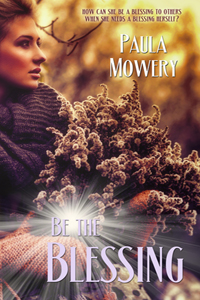
Meet Sherry Perkins. Sherry is a diverse writer, ghostwriter, screenwriter, grant writer, speaker, and editor. She is published over 150 times in both hardcopy and in online publications. The Red Book, Sherry's chapbook of poetry and short stories, can be found on Amazon. Her stories pull you from a bar to a funeral, from a plantation to a cemetery, and from New Orleans to James Dean. I'm sure once you read it, you'll be anxious to get your hands on The Blue Book, available soon.
 Sherry blogs at Copperhead 1864 and welcomes you to email her with comments, ideas, or questions at louisianawriter (at) yahoo (dot) com.
Sherry blogs at Copperhead 1864 and welcomes you to email her with comments, ideas, or questions at louisianawriter (at) yahoo (dot) com.
Simple Techniques for Editing Your Own Work
Hey, readers! I’m so thrilled to be here. As I thought about which topic to approach, many ideas ran through my mind. Hopefully, you can take away something from my experiences as an…editor. That’s right, editing is my topic. Forgive me if I ramble, but I love talking about writing and editing. Here we go.
 Sherry blogs at Copperhead 1864 and welcomes you to email her with comments, ideas, or questions at louisianawriter (at) yahoo (dot) com.
Sherry blogs at Copperhead 1864 and welcomes you to email her with comments, ideas, or questions at louisianawriter (at) yahoo (dot) com. Simple Techniques for Editing Your Own Work
Hey, readers! I’m so thrilled to be here. As I thought about which topic to approach, many ideas ran through my mind. Hopefully, you can take away something from my experiences as an…editor. That’s right, editing is my topic. Forgive me if I ramble, but I love talking about writing and editing. Here we go.
Not
only am I an avid reader and an active writer, I’m also a very, VERY obsessive
editor. My junior-high English teacher would be so proud of me. Here are a few
basic ideas you can incorporate into your own editing process, before you send
your piece to another reader, a contest, or an editor.
Spelling
1.
Don’t rely on spell check. Depending upon how your grammar / spelling
parameters are set on your computer, it’s highly unlikely the software will catch
all your errors.
For example: The word “hear” is spelled
correctly in this sentence. What if, in your frenzied attempt at getting your
thoughts down, you meant to type “here” instead? Here is spelled correctly, but
is the wrong word choice. Ooops, and your submission went out yesterday.
2.
A good exercise to check for spelling is to read each sentence
backwards. Yes, it’s a lengthy and time-consuming process. Try it. It works.
Dialogue / Verb Tense / Grammar
1.
Don’t have your characters speak proper English all the time. Be real in
your conversational dialogues.
For example: If your character is
drunk, his speech should be slurred and jumbled, not perfect.
2. Maintain proper subject / verb
agreement. Do you remember learning in school that a singular subject takes a singular verb, and a plural
subject needs a plural verb?
Susie (singular subject) likes
(singular verb) Shane.
Girls (plural subject) like
(plural verb) Shane.
3. And let’s not forget the active
voice makes for better reading and more vivid action than the passive voice.
Punctuation
1.
Don’t laugh, but every sentence must have an ending punctuation.
2. The use of ellipses (you know…those
three dots) at the end of a sentence also needs ending punctuation. So, this
means four dots – YES IT DOES. It may look weird, but it’s correct.
3. Familiarize yourself with what I call
the double adjective, phrases like:
a
high-school student the
six-year-old child
highly-placed
diplomats a curly-haired girl
Readability
1. To check if you wrote exactly what
you meant, read each sentence aloud.
2. Check for omitted words.
3. Also, look for redundancy and for
words you can omit.
The techniques above are very simple,
but they work. How do I know? I use them, I study them, and I do my research.
Don’t depend on others, be confident in your abilities as a writer. Produce the
best work you can BEFORE you send your work out.
Now, will you catch 100% of the
misspellings, the incorrect subject / verb agreement, punctuation, or
unintended meanings, probably not. Yet, if you use these methods, you will
greatly reduce the simple errors which will help your work look polished. Happy
editing!


.jpg)









.jpg)

